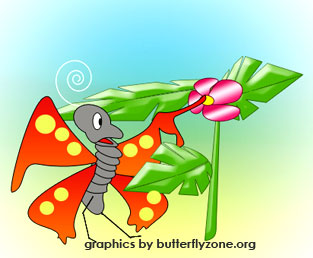Butterfly A Thing of Beauty

It is not butter and cheese if a predator wants to devour a butterfly. Contrary to its name, a butterfly is the most unpleasant stuff to eat. Most butterflies have bright coloration that serves as a warning to predators. If in spite of the warning, the predator flings its tongue on the butterfly, the poison stored in the body of the butterfly will cause severe vomitting. The predator is compelled to spit out its prey and move away.
May be this is one reason why, we see thousands of species of butterflies distributed all over the world. They are one of the largest groups of insects inhabiting the earth. Like any other insect, the butterfly has a three segmented body consisting of the head, the thorax and the abdomen, besides three pairs of jointed legs. It has two pairs of flying wings whose muscles have the power and energy to fly long distances.
The feet of the butterfly have sense organs, which tell the butterfly the taste of flowers and their secretions.
The food of butterfly is nectar, a sugary fluid secreted by the flowers. To suck this fluid, the butterfly has the sucking type of mouthparts. As the Butterfly moves from one flower to another, it spreads pollen and serves fertilization in plants.
The female butterfly after mating lays eggs underneath the leaves. The eggs hatch into caterpillars which feed on the leaves. They grow in size by shedding their skin and after a few weeks move to a convenient spot. Here the caterpillar builds a cocoon around itself. Inside the cocoon, the caterpillar metamorphoses into a butterfly. In a couple of weeks time, the butterfly emerges out of the cocoon and flies away.
Mother Nature is endowed with many wonders. The butterfly is an example. While the caterpillar is repulsive in its looks and feeds on the leaf; the butterfly is a thing of beauty that feeds on the nectar of the flower.
